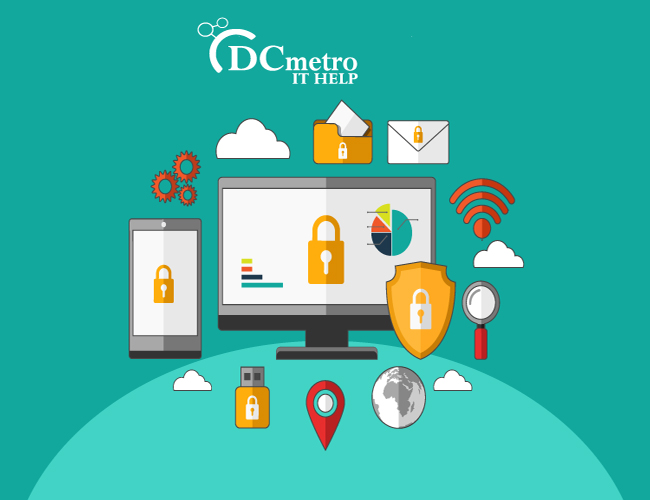Local Area Networks (LANs) and Wide Area Networks (WANs) are the backbone of modern communication systems, connecting devices and enabling seamless data transmission across organizations. However, with the increasing complexity and interconnectivity of networks, the need for robust security measures becomes paramount. LAN and WAN security are crucial for safeguarding sensitive data, protecting against cyber threats, and ensuring uninterrupted business operations. In this article, we will explore essential steps to fortify the security of LANs and WANs, providing a solid foundation for a secure and resilient network infrastructure.
Contact us 202-810-7755 today to learn more about LAn & WAN. Please contact us to setup LAN & WAN for your business or if you have any questions or concerns.
DC Metro IT Help
Securing the LAN:
- Network Segmentation: Divide your LAN into smaller segments using Virtual LANs (VLANs) or subnets. This isolation helps contain potential breaches and limits unauthorized access to critical resources. Implement strict access controls between segments, allowing only authorized users and devices to communicate.
- Strong Authentication and Access Controls: Implement robust authentication mechanisms such as IEEE 802.1X, which requires devices to provide valid credentials before accessing the LAN. Employ role-based access controls (RBAC) to assign privileges based on user roles and responsibilities. Regularly review and update user accounts and permissions to ensure they align with the principle of least privilege.
- Firewall and Intrusion Prevention Systems (IPS): Deploy firewalls at the edge of the LAN to control incoming and outgoing traffic. Configure firewall rules to allow only necessary services and block potential threats. Intrusion Prevention Systems (IPS) can monitor network traffic and identify and block malicious activities or attacks, further enhancing the security of your LAN.
- Endpoint Protection: Implement robust endpoint protection solutions, including antivirus software, host-based firewalls, and intrusion detection systems. Keep endpoint devices up to date with the latest security patches and firmware updates to address vulnerabilities.
- Monitoring and Logging: Implement comprehensive network monitoring and logging solutions to detect suspicious activities, anomalies, or potential security breaches. Monitor network traffic, device logs, and security events to identify any signs of unauthorized access or malicious behavior.
Securing the WAN:
- Secure Data Transmission: Implement secure protocols, such as Virtual Private Networks (VPNs), to encrypt data transmitted over the WAN. VPNs provide a secure tunnel between remote sites and enable encrypted communication, ensuring data confidentiality and integrity.
- Access Control Lists (ACLs): Configure access control lists on routers and switches to control traffic flow between different sites in your WAN. Specify which IP addresses, protocols, and ports are allowed or denied to ensure that only authorized traffic traverses the network.
- Virtual Private LAN Service (VPLS): VPLS provides secure, transparent LAN extensions over a WAN infrastructure. It enables the creation of virtual LANs across multiple sites, ensuring secure and isolated communication between remote locations.
- Redundancy and Failover: Implement redundancy and failover mechanisms to ensure uninterrupted connectivity and availability. Use multiple WAN links, such as leased lines or Internet Service Providers (ISPs), and implement failover mechanisms to automatically switch to backup links in case of an outage.
- Regular Auditing and Penetration Testing: Conduct regular security audits and penetration tests to identify vulnerabilities and assess the effectiveness of security measures. Engage professional security experts to perform thorough assessments and provide recommendations for strengthening your WAN security.
Securing both LANs and WANs is essential to protect sensitive data, maintain business continuity, and safeguard against cyber threats. By implementing network segmentation, strong authentication, access controls, firewalls, monitoring tools, and encryption protocols, you can establish a robust and resilient network infrastructure. Regular security audits, endpoint protection, and staying updated with emerging threats are equally crucial. Remember, network security is an ongoing process that requires continuous monitoring, assessment, and adaptation to address evolving threats. By prioritizing LAN and WAN security, organizations can establish a solid foundation for secure and reliable communication, ensuring the confidentiality, integrity, and availability of their networks.



Leave a Reply